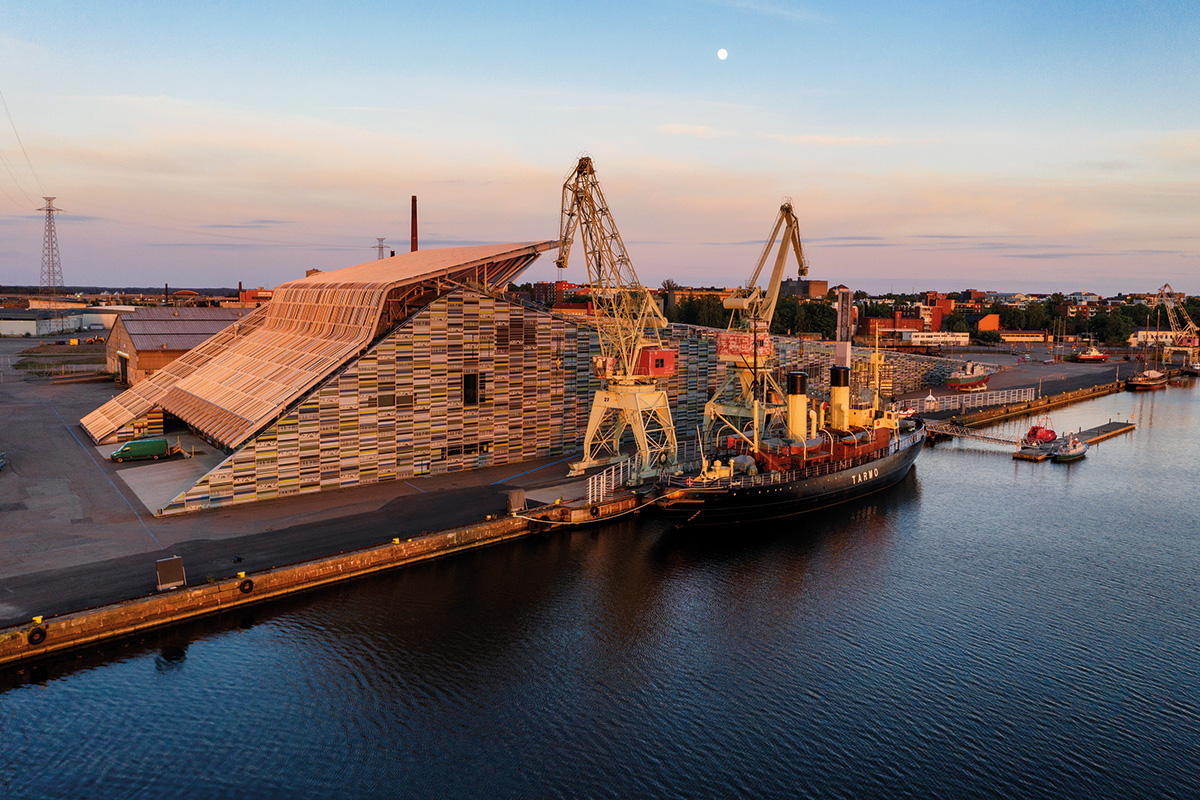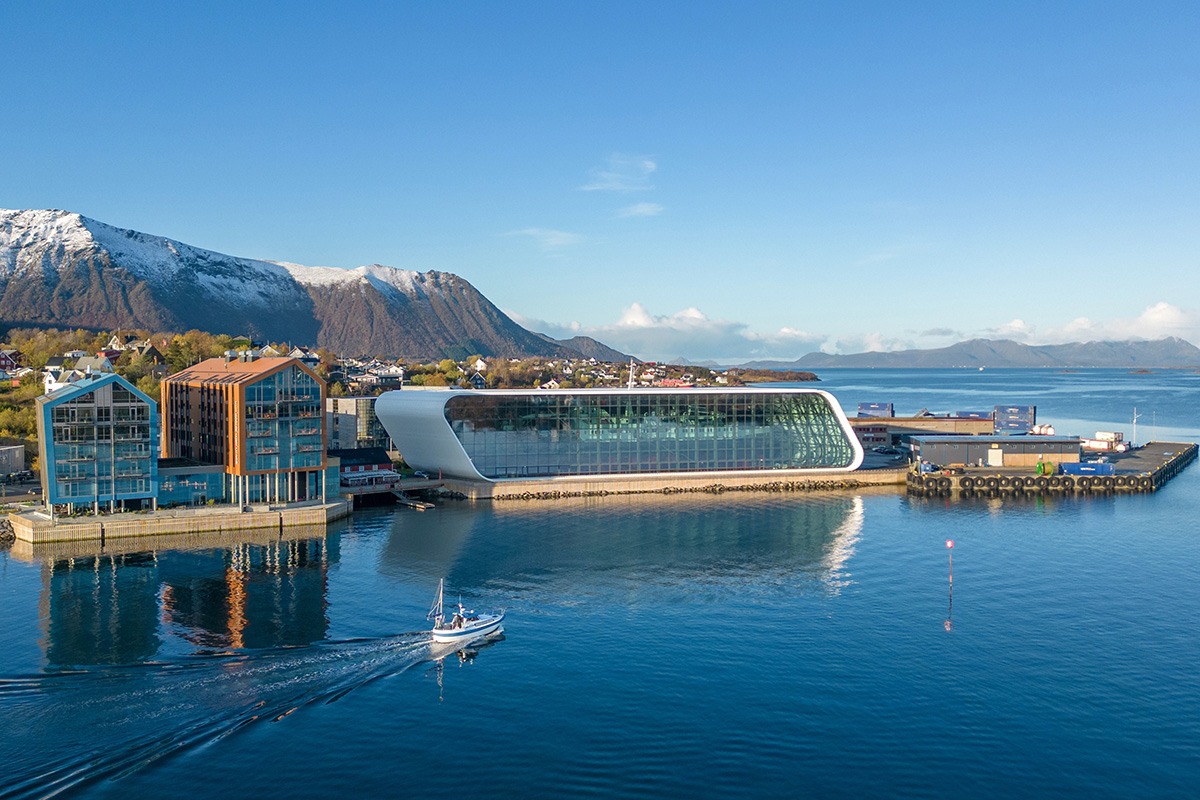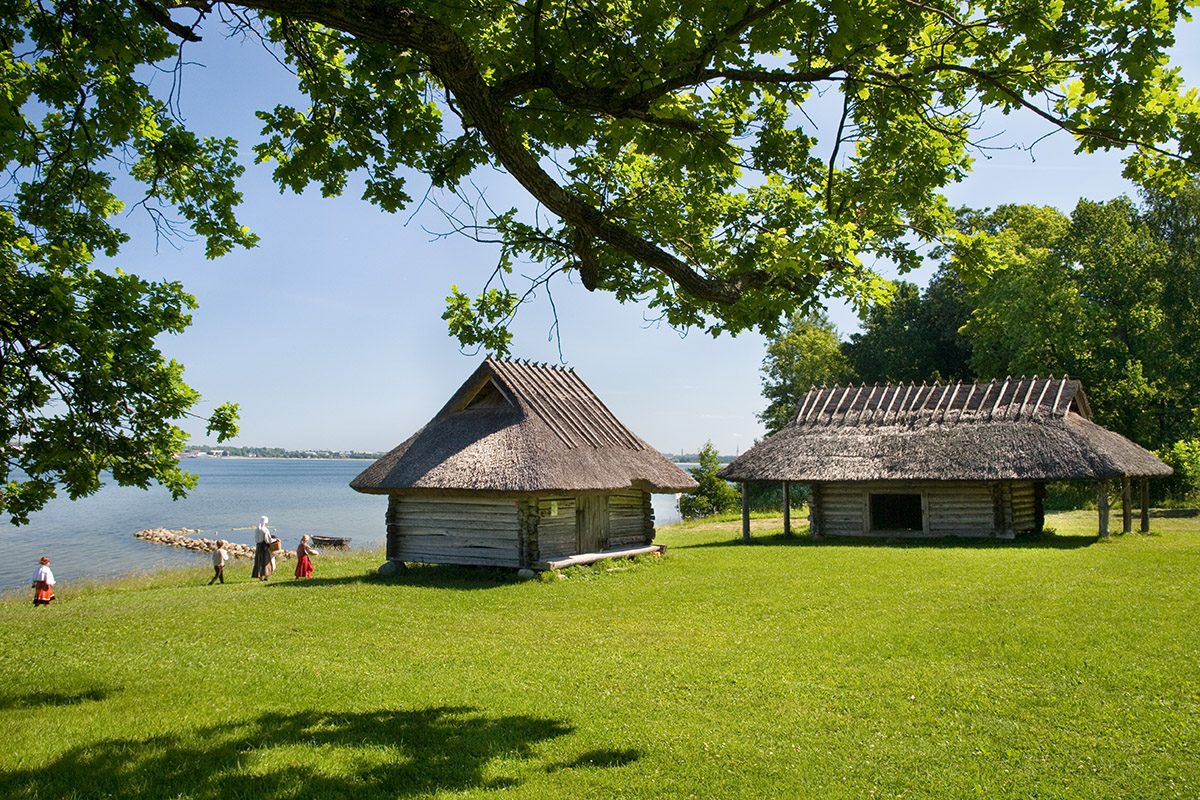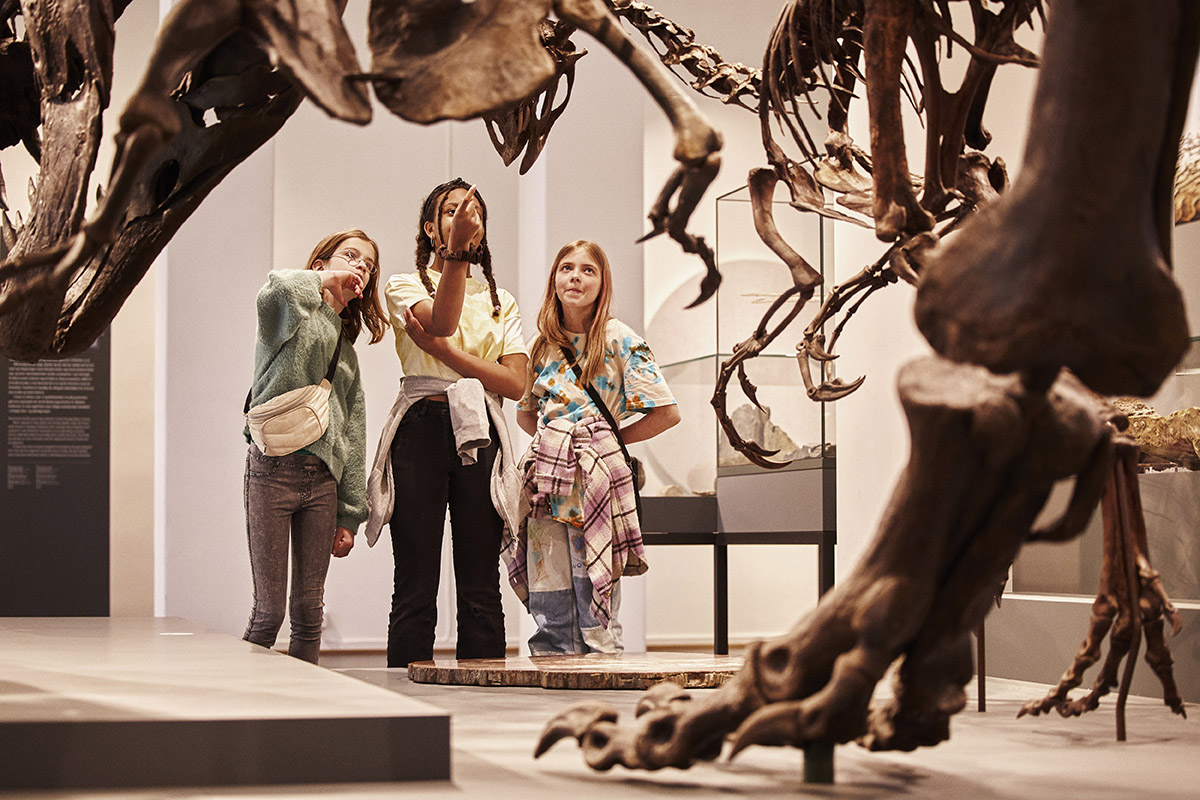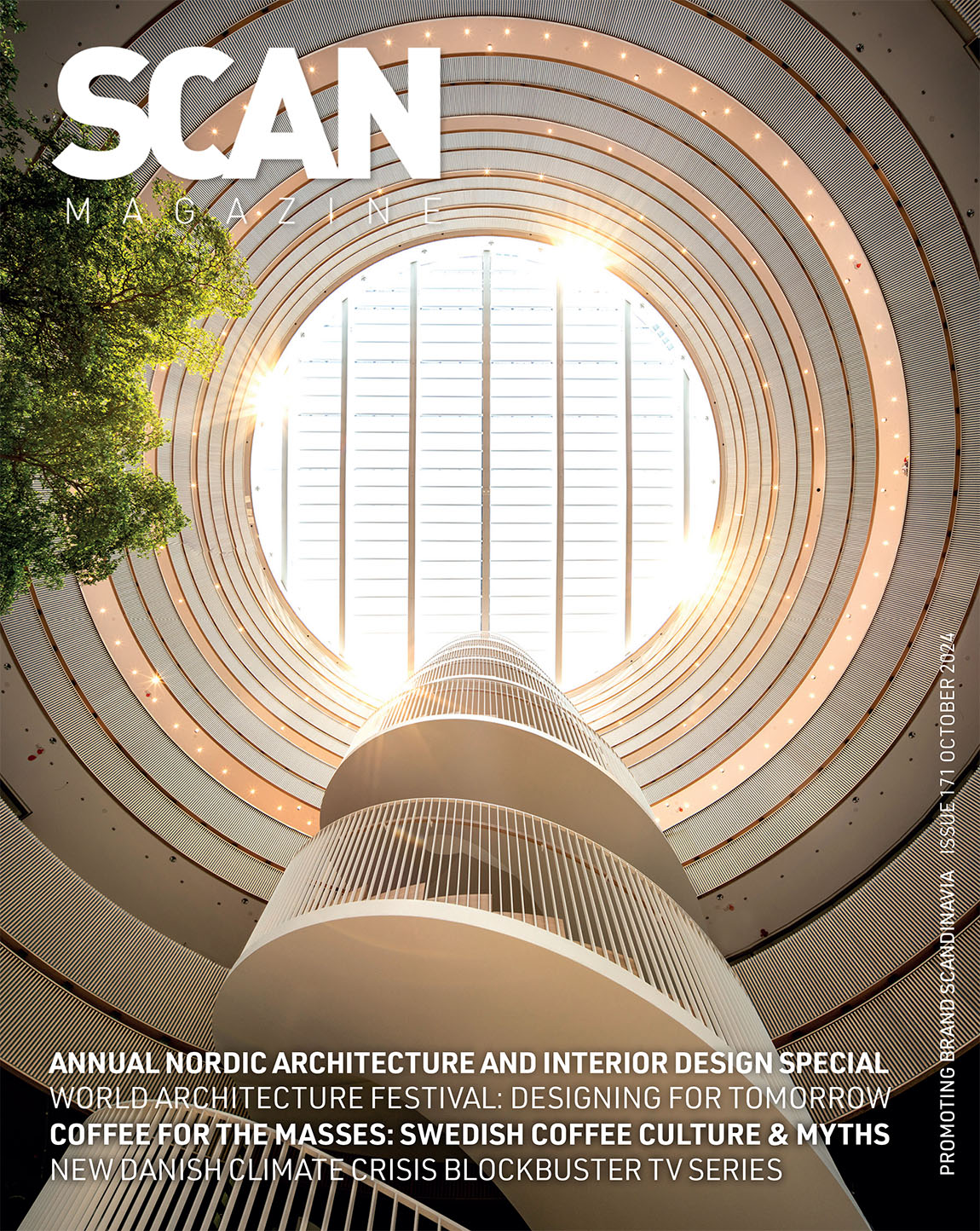J. F. Willumsens Museum
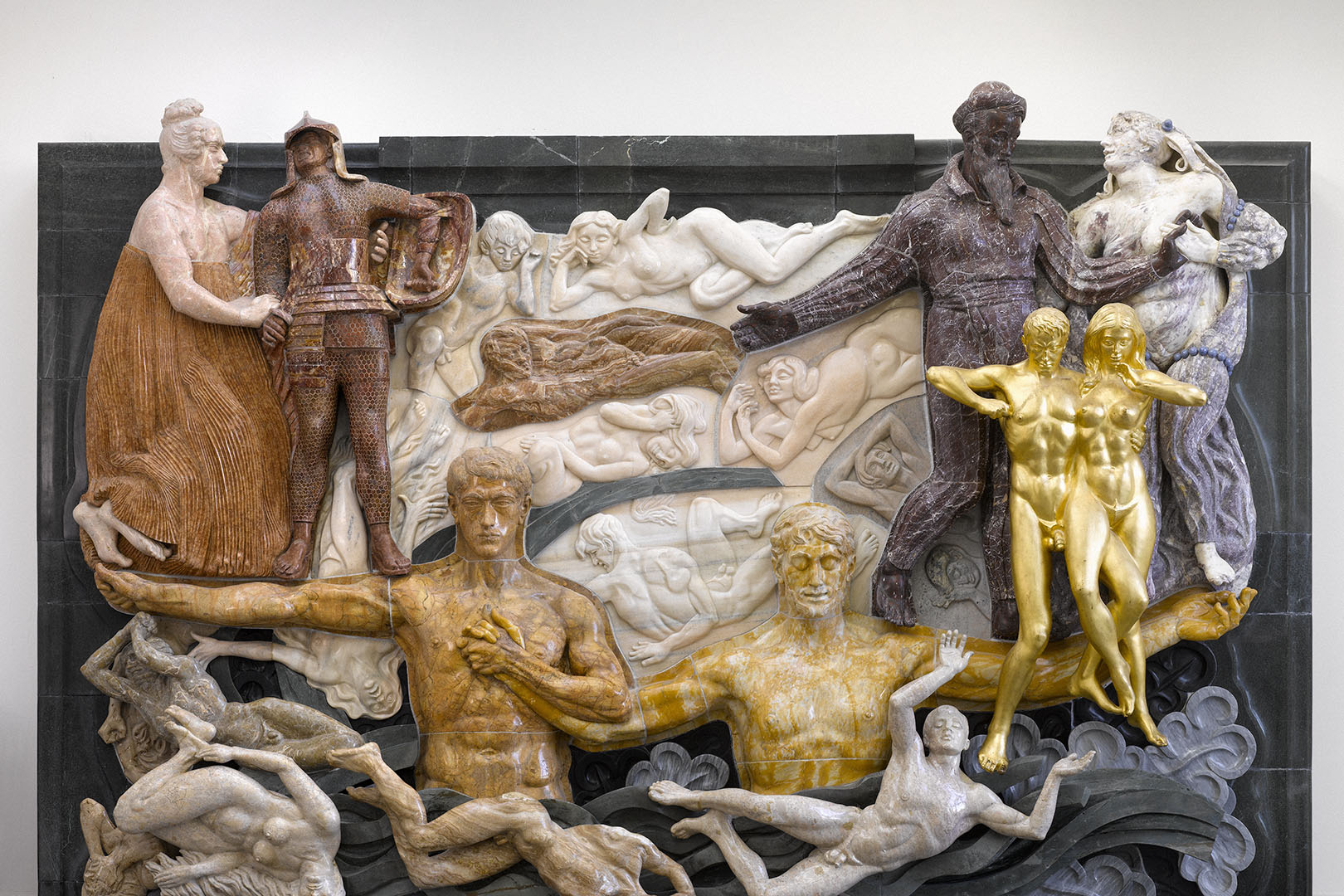
An artist in his own image
BY LOUISE OLDER STEFFENSEN
The Danish artist Jens Ferdinand Willumsen lived a long and prolific life. His career spanned more than 70 years, and he himself made it to the age of 94, having seen the world through from the 1860s to 1958. He tirelessly documented its people and the great themes of life that define humanity: painting, sculpting and photographing the world in his unique, colourful way. And yet, it would appear, he never quite felt at home in it. “People think I’ve painted to cause strife,” he said towards the end. “On the contrary, I’ve always sought to be understood.”
Despite his fame, it took the aging J. F. Willumsen a decade to convince the Danish authorities to turn the donation of his art into a museum in his honour. When it finally happened, he was unhappy with its location in his father’s Frederikssund, roughly 40 minutes from the capital: he’d wanted a grandiose museum in the heart of Copenhagen. Nowadays, the J. F. Willumsen Museum is a mecca for Danish and international artists and J. F. Willumsen has finally received the recognition he sought as one of Denmark’s most influential artists of the 20th century. The long, evolving and sometimes contradictory journey of Willumsen’s art and person is on full display at the modern museum he was granted.
Circular progression
“Willumsen is quite difficult to pin down,” says museum curator Anne Gregersen. “He was certainly an individualist; he had a unique way of approaching art, and he carefully stage-managed his own image as an artist.” He criticised and distanced himself from his contemporaries, but he also wanted broad recognition. He sought collaboration early on when he denounced the Royal Academy and became the architect behind Copenhagen’s Den Frie Udstilling, the first artists’ association in Denmark, but he only wanted to be displayed in solo exhibitions. He spent most of his life abroad, in France and Italy, and was sometimes deemed a ‘foreign painter’, but he was predominantly concerned with being recognised as a great artist in Denmark.
“Later in his own lifetime, Willumsen did receive praise for his early work, the symbolist art from the 1890s. The older he got, however, the more he separated himself from the artistic currents of the time, and again, it took people years and years to gain appreciation for his later art,” Gregersen explains. “We often tell the story of a period’s collective art movement moving upwards and onwards from one thing to another – from the figurative to the abstract in the 20th century – but Willumsen is a prime example that the truth is much more complex than that.”
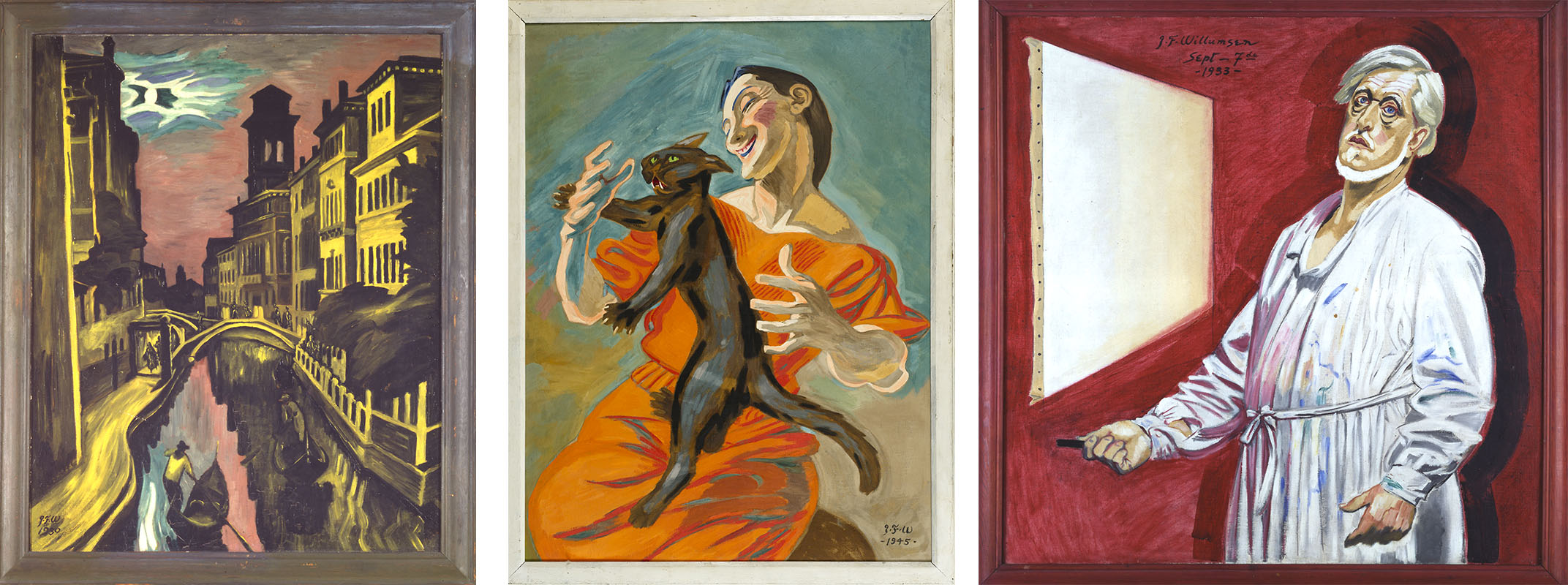
Top Right: In 1949, Willumsen painted over part of his 1888 The Prince’s Wedding, leaving the paupers on the right in the original social realist style while rebranding the left’s lordly subjects in a clashing bright, caricaturised, almost national romantic light. The painting has only recently gained recognition. Bottom Left: The San Trovaso Canal in Venice, 1930. Bottom Middle: Woman Playing with a Black Cat, 1945. Bottom Right: Self-Portrait in a Painter’s Shirt, 1933.
Understanding the misunderstood
While his work is often divided into neat ten-year periods of linear stylistic progression, there are certain themes, styles and motifs he revisits again and again, such as his explosive, French choice of colours, his photographic elements, and life’s big questions coupled with the everyday. Despite his quest to bring in new interpretations of art, Willumsen had an extensive knowledge of art history, and his art features careful throwbacks to earlier works and earlier times as well as playful experimentation with opposing artistic movements and serious engagement with older styles.
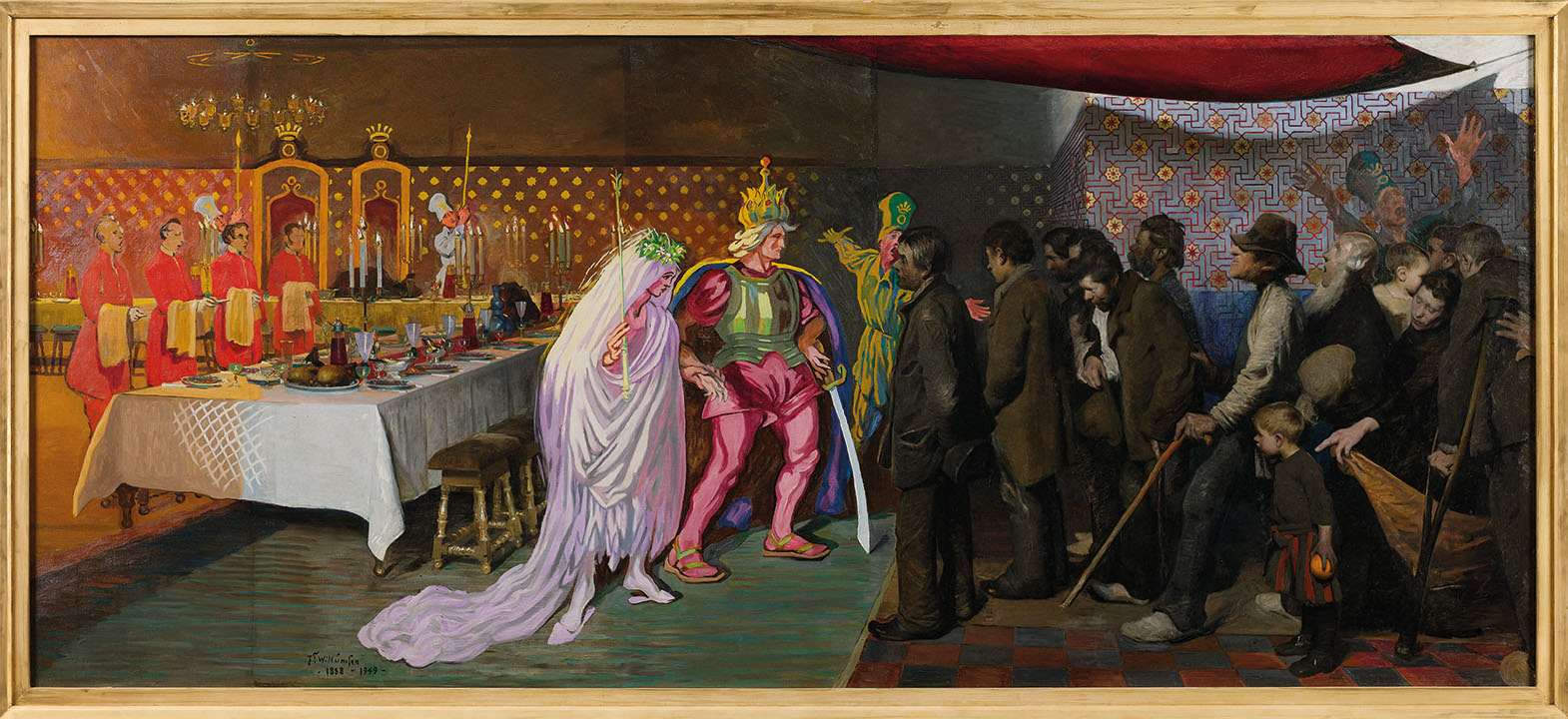
“Willumsen certainly saw himself as a great artist standing on the shoulders of the giants who’d gone before him,” Gregersen notes. “There’s a curious mix of self-aggrandisement and self-aware irony in his work. His art is large and explosive, very demanding. A lot of his later work almost seems to border on caricature, but there’s always a serious edge behind it.” The artist spent much of the 1920s overseeing the sculpting of The Great Relief, a four-by-four-metre exploration of the dichotomies of life and love. In his 70s, he created a trilogy of self-portraits titled Titian Dying, envisioning himself as the great Renaissance artist. He continued to explore the somewhat self-indulgent subjects of mortality, vitality and legacy, until his death.
“I think he learnt from experience early on that there would be a delay in the acceptance of his art: he’d cause scandal in the established art world, and then the next generation of artists would see him as an idol of modernity. He made a conscious decision to bide his time and play into the role of misunderstood artist, and look where it got him – eventually. He’s become his own unique chapter in Danish art history,” Gregersen concludes. “One of the ways he is often described today is ‘ahead of his time’. He doesn’t seem like a historical figure; he continues to demand that we engage with him as spectators and as artists today.”
Web: www.jfwillumsensmuseum.dk
Facebook: Willumsensmuseum
Instagram: @jfwillumsensmuseum
Subscribe to Our Newsletter
Receive our monthly newsletter by email

